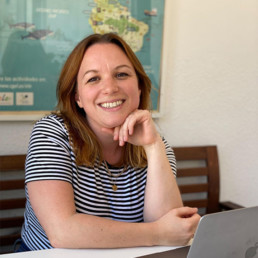
Written by Claire Stancliffe
Claire Stancliffe is an education consultant specialising in gender equity, diversity & inclusion and positive masculinities. She’s on a mission to break down gender stereotypes in schools.
Pride month is well underway, and it’s got me thinking about the thorny issue of tolerance. It’s a word we hear often associated with diversity in general, but very commonly with the LGBTQIA+ community. Tolerance is the idea that we do not need to understand someone to be able to get along with them. That we can all rub along together, to live and let live. Sounds harmless enough right? Yet if I told you I would tolerate your company for the evening, I don’t think you would be thrilled.
When it comes to inclusion, the notion of tolerance falls short. It says, “I don’t mind you breaking the rules”, while all the time upholding and even strengthening social norms. Due to religious differences, the ways we have been socialised and the norms of our various cultures, it will never be possible to create a world where we all see eye to eye on everything, but if we want to encourage true inclusion I think we need to look beyond tolerance, to a more expansive view of what exactly ‘normal’ is.
Breaking gender stereotypes
Up until very recently, our frame of reference for ‘normal’ when it comes to how we raise our children has been cis-heteronormative – that is that everyone’s gender is that which is assigned at birth (or ‘cisgender’), the expectation that all people are or will be heterosexual (or ‘straight’), and that girls behave according to one set of rules, and boys behave according to another. This has led to harmful stereotypes that perpetuate inequality.
It struck me recently that when we encourage young people to see past the narrow confines of gender stereotypes, we are often doing so from a tolerance perspective. By pointing out that it’s possible to break the norm, we can inadvertently reinforce it. It’s ok for girls to be good at maths, but it’s not part of the norm. It’s ok to marry someone of the same gender, for example, but it’s not part of the norm. It’s ok for a boy to wear makeup, but it’s not part of the norm. The terms ‘male nurse’ and ‘lady doctor’ that are still so commonly used come to mind here.
For children, and indeed all people, breaking away from the group and doing something that’s perceived as different can be a stressful position. Many of us avoid taking the risk, preferring to go along with the crowd and feel acceptance, which can severely limit our options for happiness.
Redefining the norm
Breaking gender stereotypes is not just about allowing exceptions; it’s about redefining what the norm can be. This requires creating environments where diversity in gender expression and identity is not just tolerated but celebrated.
Here are three strategies that I think can shift the dial in a positive direction.
- Provide diverse role models whenever possible. Consider where you have the opportunity to showcase different stories – can a maths word problem include a scenario with two mums; a girl playing with toy cars; a boy buying nail varnish? Invite a diverse range of professionals to come and speak to your class that counter common stereotypes, and remember to include men who enter caring professions, for example, as well as women in STEM. The more possibilities children are exposed to, the broader their horizons grow in terms of futures they imagine for themselves.
- Watch your language. Use gender-neutral terms where possible, and certainly for all job roles. Instead of ‘fireman’ use ‘firefighter’, for example, and instead of ‘lollipop lady’, try ‘crossing guard’. When referring to the group, avoid using gender identifiers unless it’s relevant. Instead of ‘boys and girls’, use terms like ‘team’, ‘class’, ‘everyone’. Small changes can make a big difference in how children interpret the world around them and the choices open to them.
- Actively challenge stereotypes. Don’t shy away from discussing stereotypes when they come up, but approach it with curiosity. Try asking ‘what makes you say that?’ and engaging as the young person explains their point of view. Highlight examples from their real lives that go against stereotypes, and encourage them to think about stereotypes that they themselves might defy. This can help them start to question the validity of broad, catch-all statements.
As adults, we can influence the way young people see the world and their place within it. So let’s move past a tolerance mindset, to one that truly celebrates them for who they are, that helps them connect to others they identify with, and that cheers them on as they grow into who they are really meant to be.

